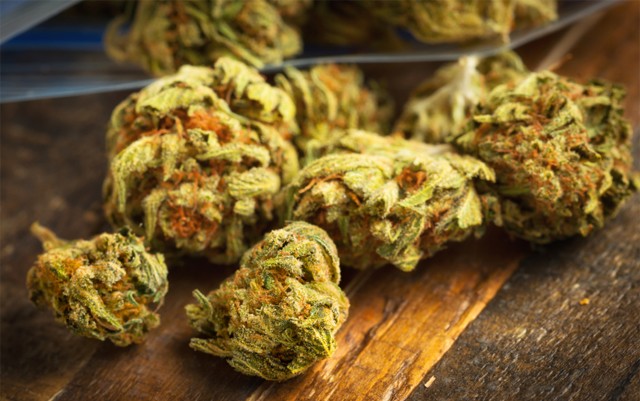Osteoporosis (brittle bone disease) is a degenerative bone disorder characterized by progressive loss of bone tissue followed by multiple, pathological fractures and related disabilities. Brittle bone disease is comparatively more prevalent in elderly women than in elderly men, possibly due to hormonal causes. Approximately 10 million people in the U.S. suffer with osteoporosis, and nearly 34 million people are at risk of developing this bone disease.
At present, bisphosphonates are the approved medications to prevent and treat osteoporosis. To treat osteoporosis, those afflicted with osteoporosis have to suffer moderate to serious side effects of these drugs, which include esophageal inflammation, nausea, abnormal heart beat, and even bone damage of the jaw. Even if someone is ready to tolerate these side effects, apparently there are no treatment benefits in the long run. Yes, after five years or so, the patient runs the risk of developing brittle bones or related bone fracture, even if the patient is put on bisphosphonates treatment.
Given these undesirable, serious side effects and inefficacy, a safer and effective alternative is being sought after by the patients, as well as the medical research community.
Cannabinoid Receptors and Bone Turnover
In most biological organisms, including humans, the presence of functional endocannabinoids and their potential physiological roles were discovered way back. Recently, researchers have discovered the presence of cannabinoid receptors in bone tissues. CB2 is predominantly expressed in osteoblasts (bone-forming cells) and osteoclasts (bone resorbing cells). It has been shown that cannabinoid receptors are vital for regulation of bone metabolism. Physiologically, the balance between osteoblasts and osteoclasts is vital for maintenance of optimal bone health. As we age, the balance gets impaired, and leads to bone density loss and osteoporosis.
Although bone structures are appreciably regulated by CB2 receptors, CB1 receptor-deficient experimental animals have been shown to suffer increased bone resorption with reduced bone formation. Similarly, CB2-deficient experimental animals remarkably suffer age dependent low bone density, trabecular bone loss and related fractures. Surprisingly, activation of CB2 receptors has inhibited bone resorption and stimulated bone formation.
CB2 is predominantly expressed in osteoclasts, osteoblasts and osteocytes. CB2 agonists, including cannabidiol, can modulate these receptors’ functions and notably, CBD does not possess psychotrophic effects. These agonists enhance osteoblast count and activity while inhibiting osteoclast precursor proliferation and expression of osteoblasts. These properties facilitate stimulation of endocortical bone formation, suppression of bone loss and help the body to maintain normal bone mass.
Among these receptors, Cnr2 is one of the main cannabinoid receptors that regulate bone metabolism. Deficits in expression of Cnr2 are linked with low bone mineral density and bone loss. Activation of CB2 receptors inhibits bone loss in experimental animals, while CB1 activation in sympathetic nerve terminals has resulted in suppression of noradrenaline release, and thus balancing tonic sympathetic restrain of osteogenesis. This evidence points to the irrefutable role of cannabinoid receptors in bone health and maintenance.
The positive role of cannabinoid receptor activation in bone cell differentiation and activity has been demonstrated in several studies. CB2 receptor activation has several effects in both precursor bone cells as well as mature osteoblastic cells. Cannabinoid receptors could elicit cell proliferating and differentiating effects in the bones.
Not only the presence of cannabinoid receptors, but also the synthesis of endocannabinoids in the bones, has been confirmed by research studies. These studies have found higher levels of endocannabinoids and ligands, including 2-AG and anandamide, in the bones than in brain cells. Anadamide directly influences bone tissue by binding with CB2 receptors.
Based on this evidence, a follow-up study has shown that activation of CB2 receptors significantly reduced experimentally-induced bone loss and improved bone formation. Researchers now confirm the functional involvement of CB2 receptors in the maintenance of bone metabolism and bone-protective benefits against age-related bone loss disorders, including osteoporosis.
Thus, the involvement of CB2 receptors and signaling in bone formation and maintenance is now clear, which may serve as a potential therapeutic target to treat osteoporosis.
CBD as a Treatment for Osteoporosis
Based on this review, we can see that CB2 modulation by agonists could be a potential therapeutic approach to treat bone disorders, including osteoporosis.
Upon researching the scientific evidence, the potential use of cannabinoids to prevent the onset of osteoporosis began two decades ago. Since then, no notable study has been done to investigate the therapeutic benefit of cannabis for brittle bones.
Naturally, CB2 receptors are not associated with psychoactive effects and CB2-specific agonists could offer a reliable opportunity to treat or prevent bone loss without suffering side effects. In pre-clinical studies, CB2 agonists attenuated estrogen-dependent bone loss, prevented bone resorption and stimulated bone formation.
In vitro studies have demonstrated that minimal concentration of cannabinoids could activate osteoclasts via hemostatic regulation of endocannabinoid production and expression of CB2 receptors.
With these benefits, oral CB2 agonists could be potentially employed as an anti-resorptive and bone-forming therapy for osteoporosis patients.
Bone fracture (pathological) associated with osteoporosis is a problem that maims many of the elderly patients. Experimental research studies have shown that CBD can help fractured bone heal faster, and also halt the progression of osteoporosis.
As of now, no approved drugs are available to aid the healing of fractures. In accordance with the animal studies, cannabis hastened the healing process after bone fractures in humans. Additionally, the pain-relieving properties of cannabis could be helpful to calm down the ache, sharp pains and inflammation that accompany the broken bone.
Recently, an Israeli study has proven that CBD treatment has the ability to promote healing in broken bones. According to the study, CBD remarkably enhanced the biomechanical properties of healing femoral bone after 8 weeks of treatment. In the study, CBD was shown to achieve these benefits by stimulating mRNA expression of the bone-forming genes and enzymes, including lysyl hydroxylase, that are involved in collagen crosslinking and stabilization processes. These biochemical events aid the improvement of biomechanical properties of fractured bone. However, these benefits were not evident in THC-treated experimental animals
So, it’s now clear that CBD not only treats/prevents osteoporosis, but also the related complications, including pathological bone fracture as a result of bone loss.
Conclusion
Despite this positive evidence, we do see a few negative studies that contradict cannabis use. These studies concluded that cannabis use caused osteoporosis, but recent studies have concluded that the opposite is true.
This research evidence points out the key role of cannabinoid receptors in bone turnover and healing processes. Although human clinical trials are yet to be initiated in these patients, it appears that cannabis use or cannabinoids could be helpful for the prevention of osteoporosis. Compared to existing treatments, cannabis may be a safer and more effective treatment option for osteoporosis.
Although this research evidence is nascent and we have not exhaustively investigated the benefits and side effects of cannabis on osteoporosis patients, the strength of the available evidence is strong enough to support the positive claims, including prevention of brittle bones and preservation of bone health.
As there are no effective and safe treatments available for this unmet need, we are delighted to see these under-explored benefits of cannabis. Unfortunately, it is not possible for all to have access to medical marijuana treatment. But it’s catching up and the benefits of cannabis are being recognized, and legalization will follow.
For those who are unable to get medical marijuana treatment; rest assured, we’re not far away to get this treatment for all, and it will happen in next few years. For others, who can get legalized marijuana treatment, the hope is that osteoporosis will be included in the list of cannabis-treatable ailments.







very well written Article Legalising cannabis is what is needed, I find cannabis locations here http://www.holistic-choice.com/find-cannabis-directory/
Thank you!
“Taking a proton pump inhibitor such as Prilosec may increase your risk of bone fracture in the hip, wrist, or spine.” I have been very concerned about this since I started taking this for my gerd / acid reflux problems. I have been on this medication for more then 30+ years. My physician has prescribed medical marijuana to me for my pain management from the chronic pain that I suffer with, from a severe spinal injury that I had from a fall 17+ years ago. Since taking the medical marijuana, I have been able to greatly reduce the amount of opiate medications from 1 or 2 pills every 4-6 hours, to now I only take 1 or 2 Norco tablets for breakthrough pain use only. When taking the Norco every 4-6 hours it was not long before they lost their effectiveness to help me deal with my chronic pain, as I became more addicted to the opiates and I needed more, and more, to get the same amount of pain relief. Now using it for breakthrough pain use only, with the medical marijuana, the Norco helps much more then it ever did before, and my chronic pain is more manageable now. Since my injury and many back surgeries, I have gone from high doses of Oxycontin to now very low use of the 5/325 mgs of Norco. I could not have been able to reduce the opiates and deal with my chronic pain without the medical marijuana. Now I just read your article about “Cannabis for Osteoporosis Prevention” and immediately thought of the side effects from using Prilosec for all these years, and that marijuana maybe protecting me from this from happening to me too. Hopefully soon with research many more positive uses for marijuana will be discovered, and help for the sick and the injured will be available for all.
Thanks for sharing your story.
Yes, cannabis reduce the dosage of opioid analgesics, tolerance and acts synergistically with opioids to reduce pain.
Maybe controversial, but I always believe proton pump inhibitors not only increase the risk of developing osteoporosis but also gastric cancer. But you don’t have to worry, you’re safe as long as you’re on cannabis.
Thanks for the article, and especially the in-depth information about the specific pharmacological effects.
And I thought I was the sensible one. Thanks for setting me sttgiahr.
Thanks, more articles to be published. Stay updated with marijuanatimes.org!